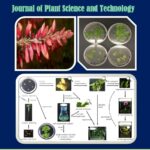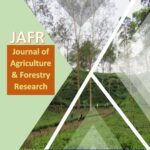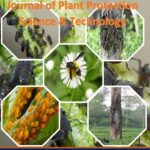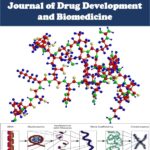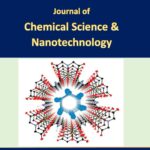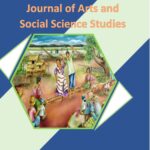South Asian Research Publishing Organization (SARPO)
Books and Thesis Publication
Guidelines for Authors Book/Thesis Publication
South Asian Research Publishing Organization (SARPO) provides book or thesis publishing services.
Submission Policy
Manuscripts submitted to Scientific Research Publishing must contain original material. The submitted manuscript, or any translation of it, must neither be published, nor be submitted for publication elsewhere. Violations of these rules will normally result in an immediate rejection of the submission without further review.
Guidelines for book/thesis
The submitted book/thesis are being evaluated for Similarity Index using appropriate software and if it is found more than 15%, the book/thesis is considered to be rejected and thus, will not be processed further until re-written. As a good practice applied throughout the world, It is assumed that the submitted work in accordance with the biological welfare laws acceptable worldwide and/or laws of the country where the work was undertaken; however, the management has the right to reject any book/thesis where there is enough reason to believe that necessary laws and procedures have not been followed. The copyrights of the published book/thesis belong to the publisher. All the submitted contributions are subjected to the panel of editors for revision. Furthermore, the editor and/or editorial board’s decision regarding book/thesis acceptance/rejection will be final and can’t be challenged anywhere.
Format Style
Book/Thesis Formatting:
Manuscripts should be prepared in MS word format and typewritten on an A4 sheet having ‘1.5’ line spacing throughout the text. The margins should be 2.54cm (1 inch) in all sides and the page number should be consecutively on the bottom of the page. The manuscript should be written in Time new roman using ’12’ font size. Bengal author should be typewritten in Bijoy font style using 14 fonts.
The author should submit single-word files that contain the following information.
- Title page of the Book
- Author name & Designation, Phone number, and Email.
- Abstract and Keywords
- Introduction
- Chapter content
- References
Language
The language of the manuscript is written in English or Bengali. It is important that manuscripts be written in clear and grammatically correct Bengali or English. Contributors who are not native English speakers are strongly advised to ensure that a colleague fluent in the English language editor has reviewed their manuscript. Concise English without jargon should be used. Long sentences and passive voice should be avoided. It is strongly recommended that the text be run through computer spelling and grammar programs. Either British or American spelling is acceptable but must be consistent throughout.
Title Page of the Book:
The title page should include:
- A concise and informative title
- The names(s) of the author(s) in the order of appearance in the book/thesis
- The affiliation(s) and addresses of the authors
- The e-mail address, telephone and fax numbers of the authors
Author’s names and affiliations
Author should indicate the given name and family name clearly. Present the authors’ affiliation addresses (where the actual work was done) below the names. Indicate all affiliations with a lower-case superscript letter immediately after the author’s name and in front of the appropriate address. Provide the full postal address of each affiliation, including the country name, and, if available, the e-mail address, and telephone number of each author.
Abstract
- The abstract should provide clear information about the topics. The abstract should not contain citations.
Keywords
- Abstract will be followed by 5-6 appropriate key words arranged alphabetically. Acronyms should be avoided.
Introduction
- This should argue the case for study, outlining only essential background. The Introduction should supply the rationale for the investigation and its relation to other works in the same field, but should not include an extensive review of the literature.
Chapter contents:
Headings and Subheadings:
Use appropriate headings and subheadings.
Symbols and Abbreviations:
With respect to symbols in the book/thesis, System International (SI) should be used. Abbreviations should be defined at first mention and used consistently thereafter.
Footnotes:
Footnotes to the text are numbered consecutively; those to tables should be indicated by superscript lower-case letters (or asterisks for significance values and other statistical data).
Acknowledgments:
Acknowledgments of people involved, national or international grants and/or funds, etc. should be placed in a separate section before the reference list in each chapter.
References:
The manuscript should be checked carefully to ensure that the spellings of the author’s names and the years are exactly the same in the text as given in the reference list.
- Unpublished results and personal communications are not recommended in the reference list, but may be mentioned in the text. If these references are included in the reference list they should include a substitution of the publication date with either ‘Unpublished results or ‘Personal communication.
- The citation of a reference as ‘in press’ implies that the item has been accepted for publication.
- In the case of publications in languages other than English, the published English title should be provided. If the publication is not published with an English title, provide the original title only; do not provide a self-translation.
Citation in the text
- In-text citations appear in brackets, and consist of the author(s) last name, as well as the document’s year of publication (e.g. Rahman 2012). The end reference list appears in alphabetical order by author last name.
- If the author’s name is clearly mentioned in the text, it can be directly followed by the year of publication, in parentheses: Zakaria (2020) isolated and identified 5 species of Trichoderma from the rhizosphere of rubber trees in Malaysia, namely…..
- If a document has two authors, include both surnames separated by “and”. For works with three or more authors, include only the first author name, followed by “et al.”: … (Rahman and Illias 2012). … (Rahman et al. 2013).
- If the author cites several sources at once, list them in chronological order, or alphabetically if two or more works were published in the same year, and separate each one with a semicolon: … (Rahman, 1963; Rahman and Alam, 1975; Beagum, 1975; Alam et al. 1992).
- Citing two or more works written by the same author in the same year, add a designator (a, b, c…) to distinguish them.
(Rahman 2011a, 2011b).
Use the same designators in the reference list: …
Rahman MA. 2011a. Isolation and Identification…
- Rahman MA. 2011b. Screening of Trichoderma and …
- If the author would like to cite a source that is cited in another document, it is always best to consult and cite the original source. The original author can be acknowledged within the text, but only the item seen appears in the reference list. … (Rahman, 2001, cited in Alam, 2010) or … Alam (2010) describes Rahman 2001 study on… In this example, the reference list would include only Alam work: Alam, M. F. 2010. The Commonwealth of Life: Economics for a Flourishing Earth. 2nd ed. Montreal (QC): Black Rose Books.
- If the author of a document is an organization, corporation, government department, university, etc., use an abbreviated form of the organization in the in text citation, by retaining the first letter of each word in the name, or some other recognized abbreviation:
UNESCO. 2006.
Journal article
Structure: Author(s) last name, First initial. Middle initial. Article title. Abbreviated journal name in italic. Year, Volume (Issue), Pages.
Example: Rahman, M. A.; Begum, M. F.; Rahman, M. M.; Bari, M. A.; Ilias, G. N. M.; Alam, M. F. Isolation and identification of Trichoderma species from different habitats and their use for bioconversion of organic solid waste. Turk. J. Biol. 2009, 35(2), 183-194.
Chapter in a book
Structure: Author(s). Book title (In italic). Edition.; Publisher: Place of Publication. Chapter #, Chapter title, Year; pp. Pages of the chapter.
Example: Shmulsky, R.; Jones, D. P. Forest product and wood science an introduction. 6th ed.; John Wiley & Sons: Surrey (U.K). Chapter 6, Juvenile wood, reaction wood, and wood of branches; pp 107-139.
Thesis or dissertation
Structure: Author. Title of the Thesis. Level of Thesis, Degree-Granting University, Location of University, Date of Completion.
Example:
- Rahman, M. A. Screening of Trichoderma and their efficacy as a bioconversion agent of municipal solid waste through appropriate technique of solid state fermentation. Ph.D. Dissertation, University of Rajshahi, Bangladesh, 2009.
- Mäckel, H. Capturing the spectra of silicon solar cells. Ph.D. Thesis, The Australian National University, December 2004.
Conference papers or proceedings
Manly, S. Collective flow with PHOBOS. Presented at the 20th Winter Workshop on Nuclear Dynamics [Online], Trelawny Beach, Jamaica, March 15–20, 2004. University of Rochester, DSpace Web site. http://hdl.handle.net/1802/228 (accessed Oct 13, 2004).
Structure: Author(s). Title of paper/presentation. Presented at conference title [Online], Place, Date; Paper Number. Title of the Site. URL (accessed Month Day, Year).
Example: Torreta, N. K.; Takeda, H.; Azuma, J. I. Presented at the 20th Winter Workshop on Nuclear Dynamics [Online], Trelawny Beach, Jamaica, March 15–20, 2004. University of Rochester, DSpace Web site. http://hdl.handle.net/1802/228 (accessed Oct 13, 2004).
Online source
For online articles provided as content in a subscription database, use the reference style for periodicals or nonscientific magazines as appropriate, and include the name of the database provider, the URL of the top page, and the date accessed.
Example: Hallet, V. Scanning the Globe for Organic Chemistry. U.S. News and World Report [Online], April 19, 2004, p 59. Business Source Premier. http://www.epnet. com/academic/bussourceprem.asp (accessed April 24, 2005).
Articles published online
Structure: Authors. Title of Article. Journal Abbreviation [Online early access]. DOI or other identifying information. Published Online: Month Day, Year. URL (accessed Month Day, Year).
Example:
Rahman, M. A,; Begum, M. F.; Alam, M. F. Screening of Trichoderma Isolates as a biological control agent against Ceratocystis paradoxa causing pineapple disease of Sugarcane. Mycobiology. [Online early access]. DOI: 10.4489/MYCO.2009.37.4.277. Published Online: December 31, 2009. https://www.ncbi.nlm.nih.gov/pmc/articles/PMC3749418/. htm (accessed September 20, 2020).
Table and Figures
- All tables and figures must have a caption and/or legend and be numbered consecutively as they are referred to in the text (e.g., Table 1, Figure 2), unless there is only one table or figure, in which case it should be labelled “Table” or “Figure” with no numbering. Captions must be written in sentence case (e.g., Map Showing Compliance with Law across the 13 District). The font used in the figures should be Times New Roman. The tables and figures themselves should be given at the end of the text only, after the references, not in the running text.
- The resolution of images should not be less than 118 pixels/cm when width is set to 16 cm. Images must be scanned at 1200 dpi resolution and submitted in jpeg format.
- Graphs and diagrams must be drawn with a line weight between 0.5 and 1 point. Graphs and diagrams with a line weight of less than 0.5 point or more than 1 point are not accepted. Scanned or photocopied graphs and diagrams are not accepted.
Art work and Illustrations:
- The art work and relevant illustrations are encouraged to submit in an electronic format. Soft copy of all illustrations/graphs prepared should be provided in Excel to adjust quality and size. JPEG or TIFF format should be used for figures along with appropriate size letter and numerals. The size of letter and numerals should be of consistent size in all the illustration or figures along with caption. MS office files are also acceptable. Captions should be numbered in Arabic and typed separately from the illustrations. Each provided figures/illustrations should not be embedded in text.
Proofs:
The book/thesis are typeset as published format upon satisfactory revision and acceptance. Once it is done, the proofs will be sent to authors for correction through E-mail, if required. The authors are requested to return the book/thesis with minor changes within two week time.
Reprints:
As the book/thesis is available online, no hard copy will be provided to the authors on publication of his/her book/thesis. The book/thesis will be available freely from net where it can be downloaded from anywhere.
Book submission:
Please submit your book/thesis to this Email address: editor@sarpo.net


